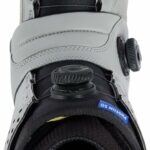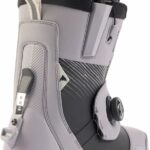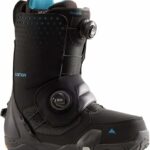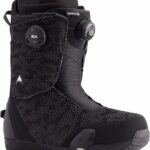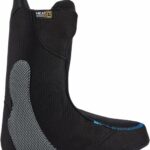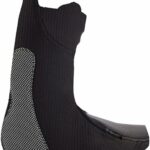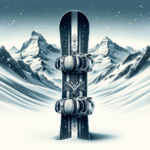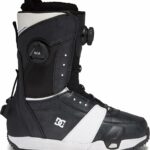Thinking about hitting the slopes with your Burton Snowboard? Before you do, there’s one crucial thing you need to know – how to install your bindings. This may seem like a daunting task if you’re doing it for the first time, but fear not. This article is here to guide you, one step at a time, through the process of securing your bindings onto your snowboard, ensuring you a safe and exhilarating ride down the mountain. Remember, the right setup can make all the difference between a dream run and a nightmare fall. So, buckle up, get ready for a hands-on project, and prepare to master the skill of installing bindings on your Burton Snowboard.
Understanding the Basics of Burton Snowboard Bindings
Snowboard bindings are an essential part of your snowboarding gear. They are the critical link between you and your snowboard, allowing you to maneuver and control your board.
Importance of bindings on Burton Snowboards
The bindings on your Burton Snowboard play several crucial roles. First, they secure your boots to your board. When you interest your energy into the binding and your board responds, that’s the connection at work. Without it, keeping control of your board would be virtually impossible.
The different types of Burton Snowboard Bindings and their uses
Burton offers a variety of snowboard bindings, each with unique features that cater to different styles and levels of snowboarding. Some of these include the Burton Cartel bindings which are great for all-mountain riding, the Burton Malavita bindings which are ideal for freestyle and park riders, and the Burton Step On bindings that offer quick and easy step-in convenience.
How to select the right Burton Snowboard Bindings for you
Picking the right bindings can greatly enhance your snowboarding experience. Consider your skill level, the terrain you’ll be riding on, and the style of snowboarding you prefer. Always prioritize comfort and the right fit for your snowboarding boots. Remember, quality bindings are a worthy investment for any snowboarder.
Gathering Required Tools and Equipment
When it comes to installing and adjusting your Burton Snowboard Bindings, you’ll need some basic tools.
Identifying tools needed for installing and adjusting Burton Snowboard Bindings
You’ll typically need a #3 Phillips head screwdriver to install and adjust your bindings. It’s worth noting that Burton’s EST bindings require a special type of screwdriver called a torque driver.
Ensuring the quality and condition of your tools
Make sure your tools are clean, rust-free, and in good condition. A stripped screwdriver can damage your binding screws, making adjustments difficult in the future.
Safety precautions when handling these tools
Always handle your tools with care. Avoid overtightening your binding screws as it may cause damage to your board or bindings. And remember, safety goggles are always a good idea when dealing with small screws and tools.
Preparation Before Installation
Before you go ahead and install your bindings, you need to prepare your snowboard and the bindings themselves.
Cleaning and inspecting your Burton Snowboard
Firstly, clean your snowboard thoroughly. Inspecting your board is essential too. Check for any significant damages or cracks especially around the areas where bindings will be attached.
Checking your Burton Snowboard Bindings
Ensure that all the parts of your Burton Bindings are in the box and in good condition. You should have a left and a right binding, baseplates, and screws.
Placement planning for your Burton Snowboard Bindings
Plan your binding placement according to your requirements. Closer bindings result in increased maneuverability while wider placements offer more stability. Remember, this entirely depends on your comfort and style of riding.
Positioning and Aligning the Bindings
Getting the position and alignment right can drastically improve your snowboarding performance.
Defining your riding style and stance
Your riding style and stance will play a significant part in positioning your Burton Bindings. Regular riders lead with their left foot while goofy riders lead with their right.
Determining your lead foot
If you’re new to snowboarding, figuring out your lead foot is essential. Think about which foot you naturally place forward when balancing or kicking a ball. That’s likely your lead foot.
Choosing the stance width
Stance width refers to the space between your bindings. Generally, having your bindings shoulder-width apart is a safe bet for starters.
How to align your Burton Bindings accurately
Your Burton Bindings should align perfectly with the direction in which you’ll be riding. Misaligned bindings can hinder your movements and make turns difficult.
Securing the Bindings to the Board
Once you’ve figured out your alignment and positioning, it’s time to secure the bindings to your snowboard.
Steps to securely attach the bindings to the Burton Snowboard
Place your binding where you plan to have it secured. Insert the screws in the holes and tighten firmly using your screwdriver. Be aware, you should refrain from overtightening as it could damage the board and bindings.
Understanding the importance of binding tightness
Having your bindings correctly tightened is crucial for safety and optimum board control. Loose bindings could result in poor control and possible accidents.
Tips for ensuring a tight, secure fit
Make sure to tighten each screw evenly. Double-check every screw for tightness and re-tighten if necessary after your first ride.
Adjusting the Bindings Angle
Getting your bindings angle right will ensure a comfortable ride and good control over your snowboard.
Understanding the need for angle adjustment
The angle of your bindings affects your riding stance and how you transfer weight and power to the board. Tweaking these angles can help you find your most comfortable stance.
Step-by-step guide to adjusting Burton Binding angle
To adjust the angle, loosen the screws on the baseplate, rotate the binding to your desired angle, then retighten the screws. It’s recommended to start with a neutral stance.
Tips for optimal angle adjustment according to your riding style
Freestyle riders generally prefer a duck stance with both feet angled outwards. All-mountain riders often choose a directional stance with the front foot angled forward more than the back foot.
Performing Safety Check After Installation
Checking for loose screws or components
After you’ve installed your Burton Bindings, make sure to conduct a safety check. Check for any loose screws and ensure all the components are properly fitted.
Ensuring Burton Bindings are correctly and securely attached
Securely attached bindings are crucial for your safety while snowboarding. Double-check your bindings attachment by lightly pushing and pulling to ensure they do not move or wobble.
Pre-ride safety tests to conduct
Always conduct a pre-ride safety test. It’s recommended to put on your boots, step into your bindings, and move around to ensure everything feels secure and comfortable.
Troubleshooting Bindings Installation Problems
Problems can sometimes occur when installing your Burton Snowboard Bindings, don’t worry – there are solutions.
Common problems faced during Burton Bindings Installation
Common problems include overtightened screws, misaligned bindings, wrong positioning, and missing binding parts.
How to solve these issues effectively
Re-check the positioning, ensure alignment, and consult your user manual if you’re unsure about anything. Always have extra binding parts and screws on hand.
When to seek professional help
If you’re struggling to install your bindings correctly, don’t hesitate to seek advice from a professional or experienced snowboarder.
Maintenance of Burton Snowboard Bindings
To ensure the longevity and effectiveness of your Burton Snowboard Bindings, regular maintenance is required.
Cleaning Burton Bindings and Snowboard
Clean your bindings and snowboard regularly. Avoid using harsh chemicals that may damage the bindings or the board.
Regular check-up and tightening of bolts
Before and after each ride, make sure to check all bolts and screws for tightness.
When to replace your Burton Bindings
Burton Bindings are built to last but constant wear and tear can reduce their effectiveness over time. Replace your bindings when you notice significant wear or damage.
Improving Your Ride with Properly Installed Bindings
Having properly installed Burton Bindings will surely enhance your snowboarding experience.
How properly installed Burton Bindings enhance ride quality
Properly installed Burton Bindings guarantee a secure connection between you and your board which enhances balance, control and will ultimately improve your ride quality.
Mastering control with your new Burton Bindings set up
A new Burton Bindings setup can feel strange initially. Practice riding and get used to it. Your control will improve as you become more accustomed to your new setup.
Tips for improving your snowboarding skills with new Burton Bindings
Try various riding styles and adjust your bindings accordingly. Gradually challenge yourself to ride on more complex terrains. And most importantly, enjoy your snowboarding experience.
- What Snowboard Bindings Should I Get? - January 23, 2024
- What Size Screws For Snowboard Bindings? - January 23, 2024
- How To Snowmobile On Water? - January 23, 2024

